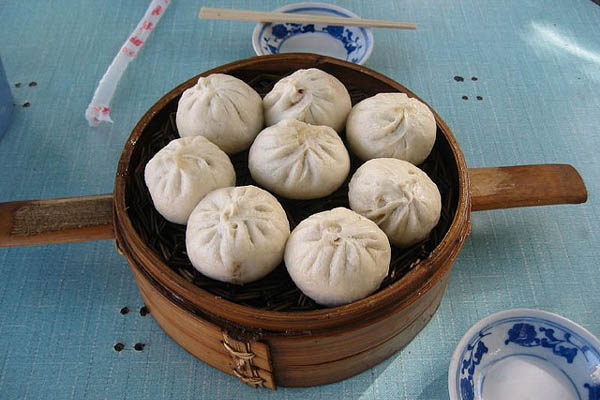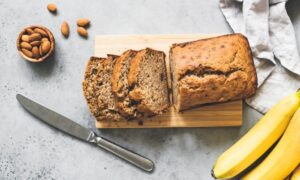
Welcome to the flavorful realm of Baozi: Chinese Breakfast Dumplings! These delectable dumplings have been a staple in Chinese breakfast culture for centuries. Filled with a plethora of mouthwatering ingredients, these steamed delights are a perfect blend of taste, texture, and aroma. In this article, we will explore the origins, variations, cooking techniques, and the cultural significance of Baozi. So, get ready to embark on a culinary journey and dive into the world of Baozi: Chinese Breakfast Dumplings.
Baozi: Chinese Breakfast Dumplings
At the heart of this article lies the essence of Baozi: Chinese Breakfast Dumplings. These dumplings are a traditional Chinese dish, often consumed during breakfast or as a morning snack. The term “Baozi” refers to a steamed bun, and it is typically filled with various ingredients, making each bite a delightful surprise. The soft, fluffy dough envelopes the savory or sweet fillings, creating a harmonious blend of flavors that tantalize taste buds.
History and Cultural Significance
Baozi’s history dates back to ancient China, where it was first documented during the Three Kingdoms period (220-280 AD). Over the centuries, Baozi has evolved, adapting to regional preferences and culinary techniques. These dumplings have become an integral part of Chinese culinary heritage and are now cherished globally for their exquisite taste.
Varieties of Baozi
Baozi offers a diverse array of fillings, catering to a wide range of palates. Let’s explore some popular varieties of Baozi and the ingredients that make them so special.
1. Cha Shao Baozi: The Classic Barbecue Pork Dumplings
One of the most beloved varieties, Cha Shao Baozi, features succulent, slow-roasted barbecue pork encased in a fluffy bun. The rich, savory filling perfectly complements the pillowy exterior, creating a match made in culinary heaven.
2. Xiaolongbao: The Soup Dumplings
Xiaolongbao, also known as soup dumplings, boast a delicate, thin skin filled with a savory broth and a choice of meat or vegetables. When steamed, the broth inside transforms into a mouthwatering soup, elevating the dumpling’s flavor profile.
3. Xian Bing: The Pan-Fried Baozi
Unlike the traditional steamed Baozi, Xian Bing is pan-fried to achieve a delightful golden crust. The pan-frying process imparts a crispy texture to the bottom while maintaining the softness of the dough, making it an irresistible treat.
4. Dou Sha Bao: The Sweet Red Bean Dumplings
For those with a sweet tooth, Dou Sha Bao is a perfect choice. Stuffed with sweet red bean paste, these dumplings provide a delightful balance of sweetness and softness.
5. Cai Baozi: The Vegetable-Filled Dumplings
Vegetarians and veggie enthusiasts are not left behind, as Cai Baozi offers a wide variety of vegetable fillings, such as mushrooms, cabbage, carrots, and more. These dumplings are a healthy and flavorsome choice.
Cooking Baozi: The Art of Steaming
1. Preparing the Dough
The first step in crafting perfect Baozi lies in preparing the dough. Combining flour, yeast, water, and a pinch of salt, the dough is kneaded until it reaches a smooth and elastic consistency.
2. Creating the Filling
The filling plays a pivotal role in Baozi’s flavor profile. Depending on the variety, the filling is crafted by blending various ingredients such as meats, vegetables, and seasonings.
3. Assembling the Dumplings
The dough is divided into small portions, rolled into circles, and filled with the chosen stuffing. The art lies in carefully pleating the edges to seal the dumpling securely.
4. Steaming Process
Once assembled, the Baozi is placed in a bamboo steamer and steamed over boiling water. The steam helps the dough rise, yielding the signature soft and fluffy texture.
5. Serving and Enjoying
Baozi is best served hot, straight out of the steamer. These dumplings can be enjoyed with a side of soy sauce or chili oil for added flavor.
Baozi: Chinese Breakfast Dumplings – A Global Obsession
Over time, Baozi has captured the hearts and taste buds of food enthusiasts worldwide. Its portability, diverse fillings, and delightful taste have made it a popular street food, both in China and abroad.
FAQs
- Are Baozi suitable for vegetarians? Yes, Baozi offers a wide range of vegetarian fillings, making them a delightful choice for vegetarians.
- Can I freeze Baozi for later consumption? Absolutely! Baozi freeze well and can be steamed again when you’re ready to enjoy them.
- Can I make Baozi with gluten-free flour? Yes, gluten-free flour can be used to make Baozi, catering to individuals with gluten sensitivities.
- What is the best way to reheat leftover Baozi? To reheat leftover Baozi, use a steamer or microwave, ensuring they are warmed thoroughly.
- Can I experiment with unique fillings for Baozi? Certainly! Baozi’s versatility allows you to get creative with fillings, adding your personal touch to the traditional dish.
- Do I need a bamboo steamer to cook Baozi? While a bamboo steamer is traditional and ideal, you can also use a metal steamer or a makeshift steamer at home.
Conclusion
Baozi: Chinese Breakfast Dumplings have carved a special place in the hearts of food enthusiasts across the globe. Their sumptuous fillings, fluffy exteriors, and rich cultural significance make them an irresistible treat for breakfast or any time of the day. Whether you prefer the classic Cha Shao Baozi, the comforting Xiaolongbao, or the sweet Dou Sha Bao, Baozi offers a delightful experience for everyone. So, the next time you’re craving a delicious and comforting breakfast, remember to treat yourself to the flavorful delight of Baozi: Chinese Breakfast Dumplings.
Making your own exotic food at home doesn’t have to be intimidating. My husband lived in Taiwan for two years when he was 19 and he came to love the people, culture, and especially the food. I wasn’t sure how to cook him foods that he came to love, but he quickly taught me.
One dish that he introduced me to early in our marriage when we received a bamboo steamer as a wedding gift is Baozi, or steamed buns. These delicious buns are filled with a flavorful pork filling and while traditionally eaten for breakfast, are delicious for any meal.
Ingredients:
Dough
- 3 cups of flour
- 1 cup warm water
- 1-1/2 teaspoon dry yeast
- 2-1/2 Tablespoon sugar
- 2 Tablespoon oil
- 1-1/2 teaspoon baking powder
Filling
- 1-1/2 lbs Pork (pork belly or rib meat)
- 1-1/2 lbs Cabbage
- 2 scallions, minced
- 1/2 tsp white pepper
- 1 tsp salt
- 1″ x 1/2″ piece peeled ginger, minced
- 1 medium clove garlic, minced
- 1 Tablespoon soy sauce
- 1 cup water
- 1 tsp Rice Wine
- 2 tsp sesame oil
- 1 tsp cornstarch
Method
Dissolve the yeast and sugar in the warm water. Once it becomes frothy, add the flour and mix until it starts to stick together. Add the oil and mix until you can take it out of the bowl and knead it on the counter top. Knead the dough for about 10 minutes until it is really soft. Do not add more flour unless its too sticky and you can’t keep it from sticking to your hands or the counter top. Once its kneaded, oil the surface of the dough and set aside in a covered bowl somewhere warm.
Separate the cabbage leaves and blanch in boiling water so they are slightly cooked but still firm (2-3 minutes). Then set aside and let them cool until you can handle them comfortably. Now you need to wring out as much water as you can. The easiest way to do this is to chop the cabbage and place it in a clean hand towel, then ring it vigorously. Then go ahead and mince the cabbage as well as the other ingredients, including the pork. Combine the pork, cabbage, ginger, scallion, garlic, salt and pepper. Mixing with a wooden spoon, add the liquid ingredients until mixed and then add the cornstarch so it doesn’t clump. You can add more water if the mixture is too dry, it should be like a batter.
Once your dough has doubled in size, punch it down and put some indentations in it where you can pour the baking powder. Knead in the baking powder until you are sure it is combined. Let the dough rest for about 10 minutes then separate into 2 ropes. Cut each rope into small segments, about 1-1/2″ in diameter by 1-1/2″ long. Roll these segments into balls and cover to let rest.
Now to make the baozi. Flatten a few balls into 4″ rounds as thin as possible. Place a few tablespoons of the tasty filling into the center of the flattened dough rounds making sure to keep a border around the edges. Then carefully pleat the the edges in a spiral fashion while pulling towards the top and close the top with one final twist. Place each baozi separately in the steamer lined with extra cabbage leaves then steam away for 14 or so minutes. Let cool slightly and then taste your delicious Chinese treat.
The two of us couldn’t possibly eat all of the baozi, so let me share with you a great tip: freeze the excess cooked baozi and steam or microwave them when ready to eat.








